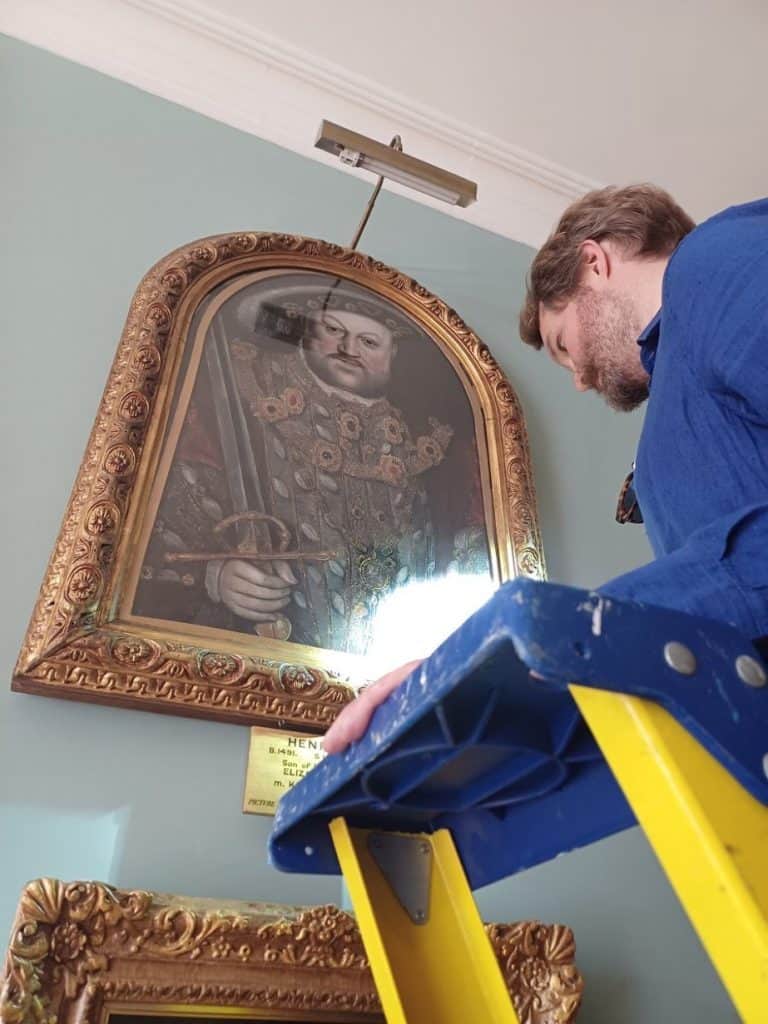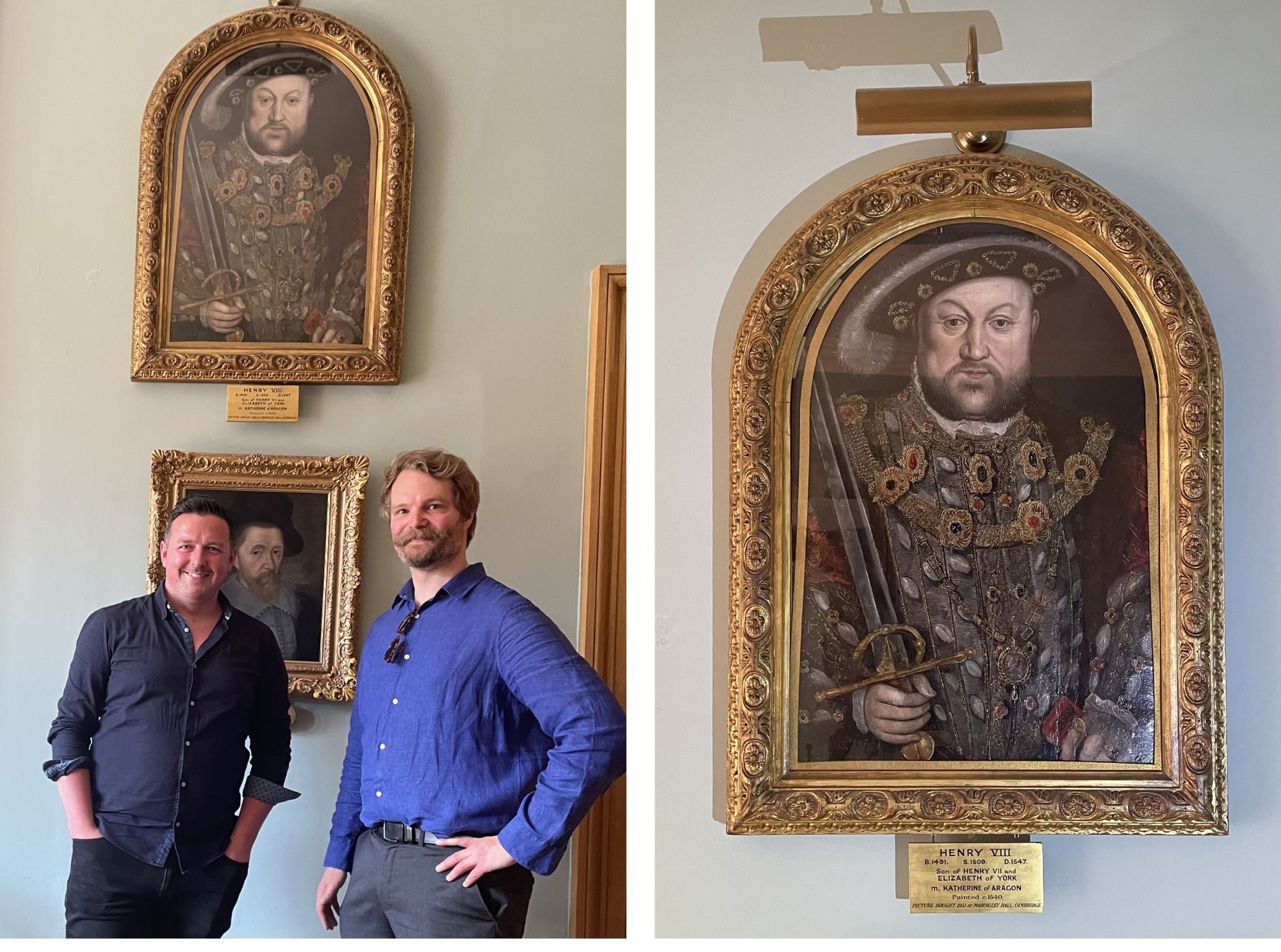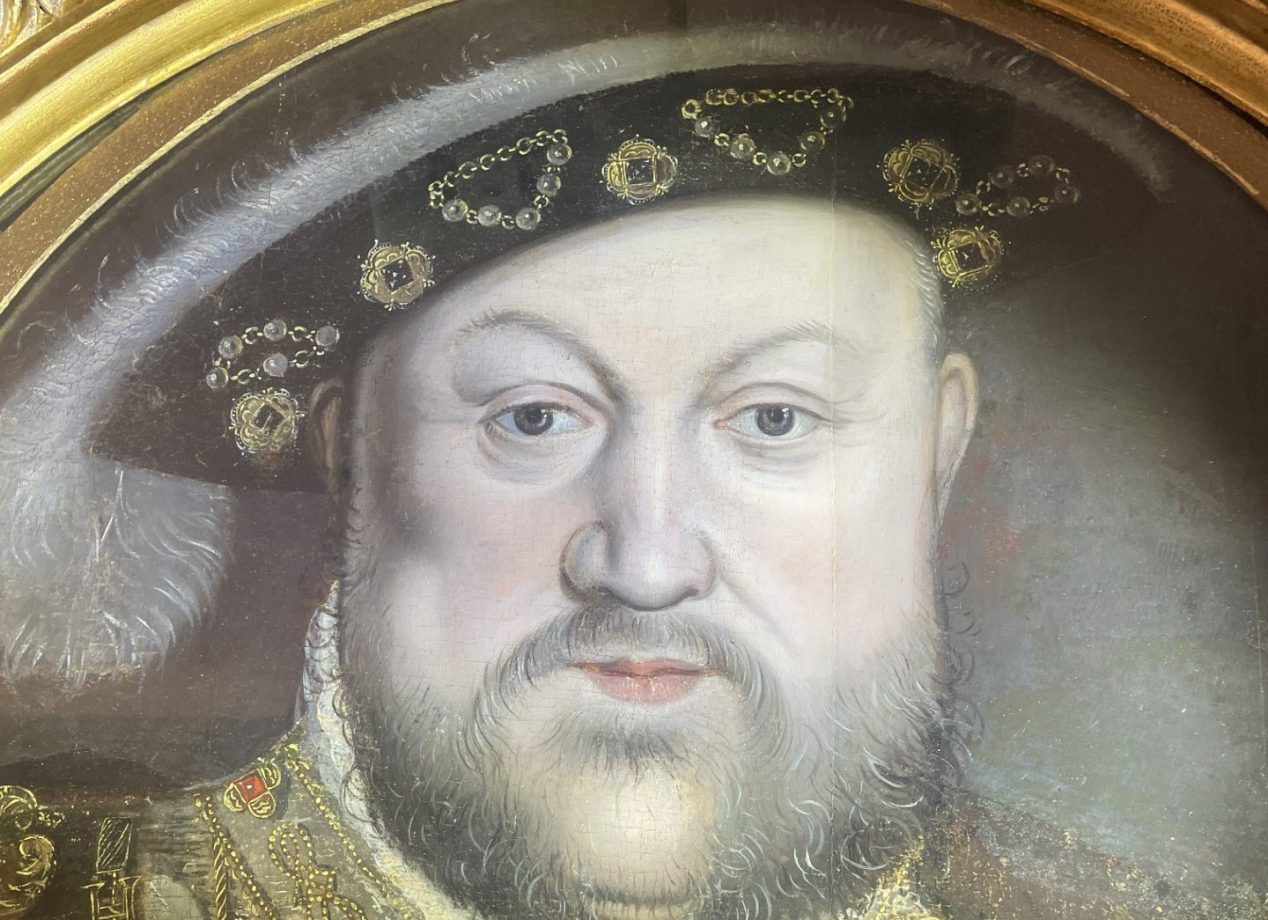Sotheby’s Institute of Art alumnus and art historian, Adam Busiakiewicz, made headlines with the rediscovery of a long-lost portrait of King Henry VIII. In reflecting on his journey, Adam shares advice for aspiring art historians and insights as a consultant for Old Master paintings at Sotheby’s.
 Congratulations on discovering the long-lost portrait of King Henry VIII! What was your reaction when you first spotted the painting in the background of a photo? Did you immediately suspect its importance?
Congratulations on discovering the long-lost portrait of King Henry VIII! What was your reaction when you first spotted the painting in the background of a photo? Did you immediately suspect its importance?
Naturally, I was terribly excited! But I remembered that discoveries are only valid if you can back up your claims with substantial evidence. It took me about an hour to hit the books and find visual evidence (such as the later engraving of the painting and the frame) to confidently say that this was the missing painting of Henry VIII from Sheldon's collection. It was only a week and a half later, when I managed to get in front of the painting on a tall stepladder, that its quality really shone. I'm glad (and a little shocked) that so many people around the world have reacted in the same way I did!
How do you feel about the historical and cultural significance of this portrait, especially considering its connection to the famous set commissioned by Ralph Sheldon?
I'm thrilled to have added, in some small way, to our understanding of this famous set, the majority of which are still missing and untraced. I am particularly glad that the Warwickshire Museum, which has many other objects related to Sheldon, now has one of the most striking sixteenth-century images of this Tudor King in its collection.
What are the next steps for this portrait now that it has been rediscovered? Are there plans for restoration, exhibition, or sale?
It is for the council to decide what to do with it, ultimately. I hope that infra-red and dendrochronology can be undertaken, which will provide us with some fascinating insights into how the painting was made, and when and where the oak panels were sourced. There's still so much to be learned about the picture and how it relates to other surviving examples. Most of all, I hope it might be admired by the people of Warwickshire—it was hanging high up in a room where nobody could really see and admire it before.
Can you share your journey into the world of Old Master paintings and what sparked your interest in this particular field?
I learned during my bachelor's degree, studying history at UCL, that I loved to study history through objects. There's nothing more tangible than standing in front of a painting or portrait that evokes the past in such an evocative way. The best painters can use oil paints to show us faces we'll never meet, places we will never go, and still lifes of food, flowers, and objects we will never be able to touch, smell, or taste. This is the magic of art that keeps me inspired and going.
What are some of the unique challenges and rewards of working with Old Master paintings compared to other art forms?
There has never been a better time to start collecting Old Masters. Old Masters are a celebration of the handmade, the unique. No two paintings are the same. The quality and diversity of paintings available, and at such good value these days, mean that practically anyone can get involved. We live in the 21st century—there is no tradition or set of rules for how you display a painting. Whether against silks, on a white wall, framed or unframed, hung in an empty room, or crowded together like an Aladdin's cave, the choice is absolutely yours. You can collect one type or from one period, or display them opposite contemporary pieces to stage an 'intervention.'
How do you approach the authentication and valuation of Old Master paintings, and what methods or technologies do you find most reliable?
There is no single method that is used to authenticate or value Old Masters. This is part of the joy and challenge they present. When you're covering pictures from the entirety of Europe, spanning anything from the 13th to mid-19th centuries, each painting presents its own problems and approaches to solving these questions. Technology can help us greatly, but it is our responsibility to interpret data when it comes to producing an informed opinion. Studying these paintings constantly reminds me of my own ignorance, but this thirst for knowledge keeps us striving ever higher, if we're lucky.
As an alumnus of Sotheby's Institute of Art's MA in Fine and Decorative Art and Design, how did your studies shape your career and expertise in Old Masters?
The MA in Fine and Decorative Art, as it was known in 2013-14, was the first time I had ever studied art history in a formal setting. Before then, it was mostly visiting collections and books that filled in the rest. The program was exactly what I dreamed of: a practical approach to gaining knowledge to pursue the study of art through an object-based approach. The skills I learned at the Institute are still relevant for cataloguers and researchers at the auction house today, and not many MA programs will be as relevant as this one. I owe the program a great deal, alongside the boundless enthusiasm and support from the staff and lecturers, including the sagacious Chantal Brotherton-Ratcliffe, Megan Aldridge, Bernard Vere, Konstanze Knittler, and Noel Riley.
What advice would you give to current students or aspiring art historians interested in specializing in Old Master paintings?
For those interested in Old Masters, I would recommend starting to use your brain like a big picture library. Absorb as much as you can, visually. Use your memory to log each painting you've seen in a museum, gallery, or house. If you're lucky one day, you'll remember something that will point you in the direction that leads to an important attribution or a painting that has been overlooked. I hope my small Henry VIII story shows that there are still many underappreciated artworks out there waiting to see the light of day.
You are currently a consultant lecturer on Sotheby's Institute of Art's MA in Fine and Decorative Art and a consultant for Old Master Paintings at Sotheby’s. What advice would you give to current students and aspiring art historians?
Be prepared to work hard and approach every opportunity with an open mind. If you're starting on the bottom rung of a ladder in a large or small arts company, don't forget that doing simple jobs thoroughly and efficiently will secure you more complex and challenging ones the next time around. Equally, don't be afraid to dive into opportunities that are presented. Just because you start in one sphere or department, in an auction house, let's say, doesn't mean you're stuck there for life. The art world is more fluid than most people tend to imagine. With an open mind, you might just find that niche that will sustain you for the rest of your working life and career.

